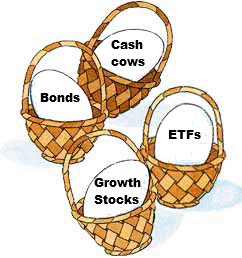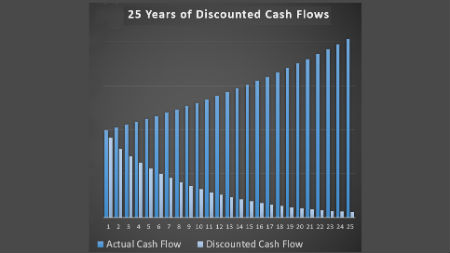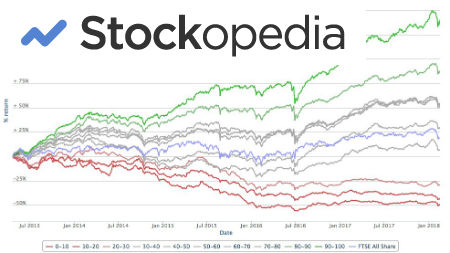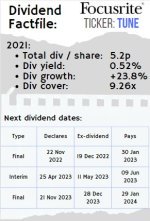Building a quality dividend stock portfolio: 7 Top Tips

Building a dividend stock portfolio that can pay you a reliable income for retirement isn't as easy as simply buying hot tip stocks.
Most information online on stocks is not concerned with this, it instead follows the ups and downs of the market or the fates of big-name companies. But if you really consider the task of building a portfolio for dividend income, you are approaching the challenge of investing from a different perspective.
The driving question in building a dividend stock portfolio for you is not: "What is the hottest stock or the biggest faller of the day" which dominates the financial news pages, but instead: "Which stocks offer the greatest likely future dividend income, at the best price today?"
There are other factors to consider, too, such as diversification and when to purchase stocks. In this article, six-figure dividend earner, Mike Roberts takes you through his top 7 tips for building a dividend stock portfolio:
Tips for building a dividend stock portfolio #1:
Make sure you have an adequate cash buffer
One of the keys to successful investing is never to be in a position where you are forced to sell (or liquidate) your holdings. Before you even begin building a dividend stock portfolio then make sure you have set aside enough cash so you are not forced to dip into your portfolio if you need cash.
If you are investing in stocks, then you must be aware that stock prices can (and will!) be very volatile. The value of your stock portfolio could halve very quickly and if this would cause your stomach to churn then maybe stocks are not for you.
This is no problem - there are plenty of other assets that could be more suited to your investing temperament such as bonds, property, farmland, or small businesses. The key, though, is that if the market were to drop quickly that you ride it out and never just sell because prices have gone down. This is why you need that cash buffer. It is something that will hold its value in the short run no matter what. We advise you have a buffer of at least six months' spending money.
Be aware of sudden changes to your circumstances that could force you to dip into cash. This could include: the loss of your job, an illness, building work that is needed on your house, a new car, school/college fees etc., etc.
Money that is used to purchase stocks should be money that you are happy to lock away for a VERY long time. It is ok for you to spend/rely on the cash proceeds from your investments (such as dividend payments) but not on the sale of the asset itself as this could result in you selling at the worst of times.
Tips for building a dividend stock portfolio #2:
Have adequate diversification
This is a controversial topic. Great investors such as Warren Buffett, Charlie Munger, and Peter Lynch, warn about excessive diversification (Peter Lynch labels it "di-worsifying") but the fact is no matter how well you know a company, it is very difficult for an outsider (and often insiders too!) to know it well enough to be aware of all the risks.
The future by its nature is unpredictable and the future can certainly catch you out. You can be caught out by changes in future trends, markets disappearing, stupid management errors, fraud, or your own oversights. What you need to avoid is having a disastrous investment that sets you back a very long way. If any of your investments are to go bad and the cashflow dries up then you need to be able to replace that cash again quite quickly.
The question is often how much diversification is really needed. Well it probably isn't as much as you probably think. You don't need 100 different stocks in your dividend stock portfolio and having that many stocks can make it too difficult for you to follow your investments properly. Charlie Munger recommends around six stocks.
Of course there is no one correct answer but we'd say you probably need at least 10 stocks in your portfolio but no more than 30. This should enable you to get to know all your holdings well whilst still meaning you can recover from any disasters.
Remember that, as long as you are not buying on leverage, then the most you can lose is 100% on any one investment. On the flip side your winners can be many hundreds or even thousands % winners.
Finally, when it comes to diversification, make sure you are fully aware of all the risks you are running. For example, if you have 20% of your portfolio in your employer's stock then you are running a huge risk. If your employer gets into trouble then not only might your investment suffer (or even get wiped out) but you could lose your job or have a reduction in earnings.
Another risk can be portfolio overlap. For example, if you buy a FTSE 100 tracker then (at the time of writing) around 10% of that money is going into Shell stock, so you need to be aware of that if you also build up a position in Shell outside your tracker.
Tips for building a dividend stock portfolio #3:
Stick to asset classes you know & understand well:
When you start out investing, you may hear of some investment that is "bound to rocket" or "the next big thing". We advise you to run away when you hear such things. That asset is quite possibly overhyped and may go out of fashion quickly. What you should focus on is assets that are easy to understand.
In the long run, equities have proven themselves time and time again to be the best asset class you can invest in. If you invest in equities, then you need to understand that you are buying an a stake in the underlying business and your success will depend on the cashflow they generate for you in the future. This cash can be paid to you in dividends, or used to increase the value of the company by repurchasing shares, expanding its operations (both organically or through acquisition) or retiring debt. As an equity owner, you should be aware that the asset class is very volatile and sentiment can change quickly.
Some people struggle with equities (usually it is the price volatility that puts them off). This is not a problem and these investors should find another asset they can understand. Many are drawn to property as this is "tangible" and they can keep a close eye on their investment. A property should, over time, pay you rents that gradually grow with inflation, but beware that property ownership is neither passive nor easy. You might be interested in our page on dividends vs. rents and our blog entry on what it's like to be a landlord.
Other assets that could be considered include bonds (which will pay you coupons or interest payments), cash (will pay you interest), private businesses or franchises (will pay you profits), copyrights or trademarks (will pay you cash to use your asset), or farmland (a farmer will pay you rents).
The key is to make sure you understand the investments you have and what it is that will drive the cashflow for you. This should help you ignore the consistent market fluctuations and focus on the underlying asset.
Tips for building a dividend stock portfolio #4:
Avoid leverage (especially borrowing on margin):
Remember what we said at the start - you MUST avoid being forced to sell.
If you buy stocks on leverage and then the stock price goes down (and that will happen sometimes) then you will be asked to "post collateral" - which means add cash to your account. If you don't add the cash (or you can't) then the broker will sell your stock. This will crystalize your loss and means you have lost control of the selling process - you need to avoid this situation. The only way to avoid it is to NEVER buy stocks on leverage. It is dangerous and you can end up losing more than your original investment.
There are some good types of debt where you borrow to purchase a cash generating asset where the outstanding principal does not fluctuate with the value of the asset. The best example of this is a mortgage. Sometimes people use this type of debt to buy businesses as well. These types of debt are acceptable but, again, you must be aware of the repayments required and be wary of the fact interest rates can move which will increase your repayment obligations. As long as you're not over-borrowing and you can easily repay the debt, then these types of loans can be considered.
Tips for building a dividend stock portfolio #5:
Focus on the underlying assets & the cash they produce:
This is the key to successful long term investing. If you buy a stock at $20 and it drops to $17 the next week then this tells you nothing. What you need to focus on is the underlying profits, earnings per share, dividends, market share, competition, etc etc. Over time, it will be the future value of your dividends that determines whether your investment is successful. If dividends aren't paid to you today then they must be re-invested so they can pay you higher dividends in the future.
Any "investment" that requires someone else to pay a higher price for the asset in the future is what we call speculation and we don't believe is a real investment. This is why we say avoid investments in assets that don't produce cash such as bitcoin, gold, silver, fine art, oil, copper, etc etc. See here why Warren Buffett says these types of investing rely on "Greater Fool Theory".
Once you have found cash generating assets then go and read chapter 8 of "The Intelligent Investor" by Ben Graham which is a chapter that effectively tells you that the "market is there to serve you not to lead you".
Tips for building a dividend stock portfolio #6:
Make sure you have an adequate cash buffer
If you live in the US and only consider US stocks for your dividend stock portfolio, then you're only looking at around 40% of the total stocks out there in the world and the stocks in other countries represent far lower percentages: If you only look at Australian stocks then you're just covering 2% of world stocks.
Bottom line - there is a big world out there and you are free to fish in many oceans. There are high quality businesses listed everywhere and it makes sense to diversify your geographic exposure. This means new sectors can be opened up to you and valuations in other markets can be more attractive. Of course you need to be aware of the risks of venturing overseas, such as knowing about currency risks, cultural risks, different accounting or corporate governance standards, political risk, etc. etc. For more then read our page on international investing.
Tips for building a dividend stock portfolio #7:
Make sure you have an adequate cash buffer
One of the most powerful forces in investing is time. Simply put, the longer you invest for then the greater your returns will be. This is because of the power of compound interest. Go ahead and read our page on compound interest and you'll see that a small amount invested now can turn into a huge amount in 25+ years, especially if you can generate strong returns.
This is why it is so important to start investing when you are young. A 25 year old has a huge advantage over a 45 year old and simply doesn't need to put away as much cash for the same result when they get to retirement. So the lesson in this is that to procrastinate on investing can become extremely costly.
Even if you receive a large lump sum, then statistically you are better off investing it straight away rather than drip feeding into the market. This has been illustrated by Vanguard and by this excellent article by Nick Maggiulli.
You also need to remember that it is impossible to "time your entry into the market" consistently. But luckily, "TIME IN the market" is more valuable than "TIMING the market".
I'll leave you with a quote from Warren Buffett, who surely built the best dividend stock portfolio in history: "I don't know WHEN to buy stock but I do know WHETHER to buy stocks".
Good luck building your dividend stock portfolio.
Mike Roberts
p.s. If you need more dividend-focussed advice like this, consider joining our Dividend Detox Newsletter for a monthly dose of investing common sense.
Got a BURNING dividend question for 6-figure dividend earner Mike Roberts?
What is it that you really want to know about investing?
Submit a query and Mike will write a page in response.
PLEASE NOTE - in accordance with our terms of use, responses are meant for education / interest only. We do not give specific financial advice.



